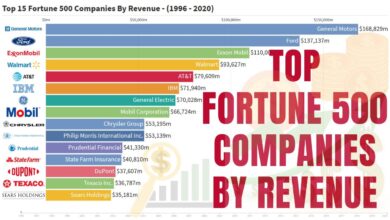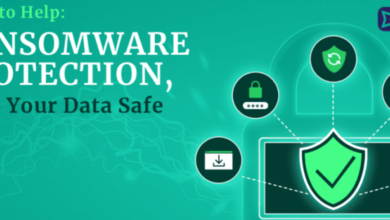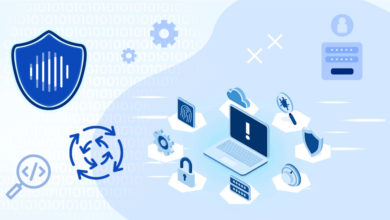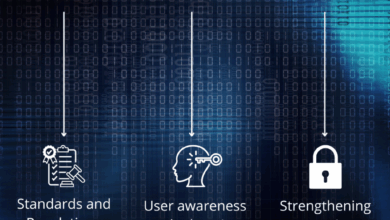
Clouded Perceptions Debunking Private Cloud Security Myths
Clouded perceptions debunking private cloud security myths – Clouded Perceptions: Debunking Private Cloud Security Myths – we’ve all heard the whispers, the assumptions about private cloud security. Is it truly the impenetrable fortress many believe it to be? Or are there hidden vulnerabilities lurking beneath the surface? This post dives deep into the common misconceptions surrounding private cloud security, separating fact from fiction and helping you navigate the complexities of securing your data.
From comparing private and public cloud security models to exploring the real costs involved, we’ll dissect four major myths that often cloud our judgment. We’ll look at the responsibilities involved, the potential for internal threats, and the crucial role of regular security audits. Get ready to shed some light on the shadowy corners of private cloud security!
Introduction
Private cloud security is often misunderstood, leading to unnecessary anxieties and potentially flawed security strategies. Understanding the core components and addressing common misconceptions is crucial for building robust and effective security postures. This introduction will define private cloud security, explore its perceived risks, and compare it to its public cloud counterpart.Private cloud infrastructure consists of computing resources—servers, storage, networking—that are dedicated to a single organization.
This dedicated environment allows for greater control over security policies, data location, and compliance requirements. However, this control doesn’t automatically equate to superior security; it requires diligent management and a comprehensive security strategy.
Common Misconceptions Surrounding Private Cloud Security
A prevalent misconception is that private clouds are inherently more secure than public clouds. This isn’t necessarily true. While private clouds offer greater control, the responsibility for security still rests entirely with the organization. Another misconception is that simply deploying a private cloud eliminates all security risks. Private clouds, like any IT infrastructure, are vulnerable to various threats, including insider threats, misconfigurations, and vulnerabilities in the underlying software and hardware.
So many misconceptions surround private cloud security, but the truth is often simpler than the hype. Building secure applications is key, and that’s where the innovative approach of domino app dev, the low-code and pro-code future , really shines. By focusing on efficient development, we can build more secure applications faster, directly addressing those clouded perceptions about private cloud security.
It’s all about smart solutions, not just complex ones.
Finally, many believe that private cloud security is significantly more expensive than public cloud security. While the initial investment might be higher, the long-term cost can vary depending on factors such as the scale of operations and the specific security requirements. A well-planned public cloud strategy can often be more cost-effective.
Examples of Clouded Perceptions
Consider a financial institution choosing a private cloud believing it inherently protects against data breaches. While the private cloud offers more control over data location and access, a poorly configured firewall or inadequate employee training can still lead to a breach. Conversely, a small business might avoid a private cloud due to perceived high costs, opting for a public cloud without considering the potential security risks associated with shared infrastructure and reduced control over data.
These scenarios highlight the importance of understanding the nuances of both private and public cloud security models before making decisions.
Comparison of Public and Private Cloud Security Models
| Feature | Public Cloud | Private Cloud | Considerations |
|---|---|---|---|
| Responsibility for Security | Shared responsibility model; provider handles infrastructure, customer manages applications and data | Sole responsibility with the organization | Public clouds leverage economies of scale for security, while private clouds require dedicated resources and expertise. |
| Data Location and Control | Data resides in provider’s infrastructure; control varies based on service model | Data resides within the organization’s infrastructure; full control over data location and access | Compliance requirements might necessitate specific data residency; private clouds offer greater control but require careful management. |
| Cost | Typically lower upfront costs; pay-as-you-go model | Higher upfront investment; ongoing operational costs | Total cost of ownership should be carefully evaluated; public clouds offer scalability benefits that can offset costs. |
| Scalability and Flexibility | Highly scalable and flexible; resources can be easily provisioned and de-provisioned | Scalability can be limited by available resources; requires planning for future growth | Private clouds require careful capacity planning; public clouds offer greater agility for rapid scaling. |
Myth 1: Private Clouds are inherently more secure than public clouds.
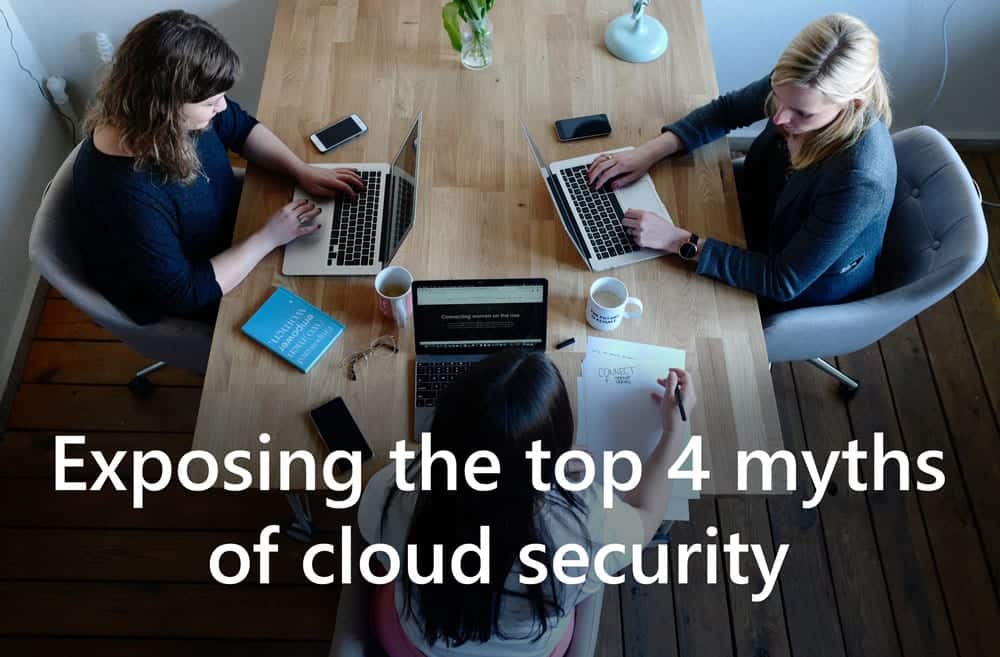
The belief that private clouds automatically offer superior security compared to public clouds is a common misconception. While both environments present unique security challenges, the inherent security level isn’t determined solely by the deployment model. Instead, security is a function of implementation, management, and the specific controls in place.The security responsibilities differ significantly between private and public cloud environments.
In a public cloud, the cloud provider is responsible for the security
- of* the cloud (the underlying infrastructure), while the customer is responsible for security
- in* the cloud (their data and applications). In a private cloud, the organization typically owns and manages the entire infrastructure, meaning they bear the responsibility for all aspects of security. This seemingly simpler model can, however, lead to a false sense of security and a greater burden on internal resources.
Private Cloud Vulnerabilities
Private cloud deployments, while offering greater control, can introduce vulnerabilities unique to their structure. For instance, a poorly secured internal network can be a significant weakness, allowing lateral movement for attackers who gain initial access. Moreover, the lack of economies of scale often means private clouds might not benefit from the same level of security patching and updates that larger public cloud providers can implement.
Insufficient investment in security monitoring and threat detection tools can also lead to a slower response to security breaches. A specific example would be a company using outdated virtualization software in their private cloud, making it susceptible to known exploits. This outdated software might go unnoticed due to a lack of proactive security monitoring.
Impact of Internal Threats
Internal threats pose a significant risk to private cloud security. Malicious insiders, accidental data breaches by employees, or compromised credentials can have devastating consequences. Unlike public clouds where the provider handles much of the infrastructure security, private clouds rely heavily on the vigilance and security practices of their internal teams. A scenario demonstrating this could be an employee with administrative access accidentally deleting critical data or an employee falling victim to a phishing attack, granting an attacker access to the private cloud.
The damage potential in such situations can be much higher due to the comprehensive access an attacker might gain.
Configuration and Management’s Crucial Role
Proper configuration and management are paramount to mitigating risks in private cloud environments. This involves robust access control mechanisms, regular security audits, strong encryption practices for data at rest and in transit, and a well-defined incident response plan. Regular patching and updating of all software components is crucial, as is employing robust security information and event management (SIEM) systems to monitor activity and detect anomalies.
A lack of proper configuration and management can quickly negate any perceived security advantages of a private cloud, making it more vulnerable than a well-secured public cloud. For instance, failure to implement multi-factor authentication across all access points leaves the private cloud susceptible to credential stuffing attacks, significantly increasing the risk of unauthorized access.
Myth 2: Private Cloud eliminates the need for robust security measures
The belief that a private cloud inherently negates the need for a comprehensive security strategy is a dangerous misconception. While having more control over your infrastructure offers certain advantages, it doesn’t magically eliminate vulnerabilities. In fact, the responsibility for security becomes even more critical, as you are solely responsible for the entire security posture of your private cloud.
Ignoring this leads to significant risks.Private cloud environments, despite being internal, are still susceptible to a wide range of threats, including insider threats, malware infections, misconfigurations, and even physical security breaches. A robust security approach is non-negotiable, demanding a layered strategy incorporating various security best practices and technologies.
Security Best Practices for Private Clouds
Implementing robust security measures in a private cloud environment requires a multi-faceted approach. This involves strong access control, regular patching and updates, robust monitoring, and a well-defined incident response plan. For example, implementing strong authentication mechanisms like multi-factor authentication (MFA) significantly reduces the risk of unauthorized access. Regular vulnerability scanning and penetration testing identify weaknesses before malicious actors can exploit them.
Data loss prevention (DLP) tools prevent sensitive information from leaving the network. These proactive measures, combined with a reactive incident response plan, create a resilient security posture.
Basic Security Architecture for a Private Cloud Environment
A well-designed security architecture forms the bedrock of a secure private cloud. This architecture typically includes several key components. First, a strong perimeter security is crucial, using firewalls and intrusion detection/prevention systems (IDS/IPS) to monitor and control network traffic. Next, virtual machine (VM) security requires careful attention, employing techniques such as VM sprawl mitigation and regular security patching.
Data security is paramount, achieved through encryption at rest and in transit, access control lists (ACLs), and data loss prevention (DLP) measures. Finally, robust monitoring and logging capabilities are essential to detect and respond to security incidents promptly. This architecture ensures a layered defense, making it significantly more difficult for attackers to breach the system.
Importance of Regular Security Audits and Penetration Testing
Regular security audits and penetration testing are vital for identifying vulnerabilities and weaknesses in a private cloud environment. Security audits provide a comprehensive assessment of your security controls, policies, and procedures, identifying gaps and areas for improvement. Penetration testing simulates real-world attacks to expose vulnerabilities that might otherwise go undetected. These combined efforts ensure that your security measures remain effective and up-to-date.
Regular, scheduled audits and penetration tests, at least annually, are a critical part of any mature security program. The results should be reviewed and acted upon promptly to address identified weaknesses.
Essential Security Tools and Technologies for Private Cloud Security
A comprehensive suite of security tools and technologies is necessary to protect a private cloud environment. This includes firewalls (both network and application-level), intrusion detection/prevention systems (IDS/IPS), vulnerability scanners, intrusion detection systems (IDS), and security information and event management (SIEM) systems for centralized logging and analysis. Data loss prevention (DLP) tools are critical for protecting sensitive data. Configuration management tools help maintain consistent and secure configurations across the cloud environment.
Finally, implementing a strong identity and access management (IAM) system with multi-factor authentication (MFA) is essential for controlling access to resources. Regular updates and maintenance of these tools are critical to ensure their effectiveness.
Myth 3: Private Cloud offers complete control and eliminates external risks: Clouded Perceptions Debunking Private Cloud Security Myths
The belief that a private cloud offers complete control and eliminates external risks is a dangerous misconception. While a private cloud offers more control than a public cloud, it’s crucial to understand that complete control is an illusion, and external risks remain significant. The reality is that even within your own data center, vulnerabilities exist that can be exploited, leading to data breaches and security compromises.Private cloud environments, while internal, are still susceptible to various attack vectors and external influences.
The idea of complete isolation is a fallacy; numerous factors can compromise security, despite the perceived level of control.
Supply Chain Attacks in Private Cloud Environments
Supply chain attacks represent a significant threat to private cloud security. These attacks exploit vulnerabilities within the hardware and software components used to build and maintain the private cloud infrastructure. For example, a compromised server component, a malicious firmware update, or tainted operating system images can provide attackers with a backdoor into the entire private cloud environment. The impact can range from data theft and disruption of services to complete system compromise.
Consider the potential for a compromised network card manufacturer providing equipment with hidden malware; this could give attackers persistent access to the private cloud, potentially going undetected for extended periods.
Vulnerabilities in Third-Party Software, Clouded perceptions debunking private cloud security myths
Private clouds often rely heavily on third-party software and services, including operating systems, databases, virtualization platforms, and security tools. These third-party components frequently contain vulnerabilities that can be exploited by attackers. Failure to patch these vulnerabilities promptly and effectively leaves the private cloud open to attack. For instance, a known vulnerability in a widely used database management system, if unpatched, could allow attackers to gain unauthorized access to sensitive data stored within the private cloud.
Regular security audits and updates of all third-party software are critical to mitigate this risk.
Challenges of Maintaining Compliance in Private Cloud Environments
Maintaining compliance with industry regulations and standards, such as HIPAA, PCI DSS, or GDPR, is significantly challenging in a private cloud environment. Meeting these requirements demands meticulous configuration, ongoing monitoring, and rigorous auditing procedures. The responsibility for compliance rests solely with the organization operating the private cloud. Failure to comply can result in hefty fines, reputational damage, and legal repercussions.
For example, an organization failing to properly secure protected health information (PHI) in a private cloud environment under HIPAA could face severe penalties. The complexity of maintaining compliance across various aspects of the private cloud environment adds significant overhead and necessitates specialized expertise.
Examples of Data Breaches in Private Cloud Settings
Data breaches can and do occur even within private cloud environments. A poorly configured firewall, an insider threat, or a successful phishing attack can all lead to data compromise. For example, a malicious insider with access to administrative privileges could steal sensitive data or deploy malware. Similarly, a successful phishing attack targeting an employee could provide attackers with credentials allowing them to access the private cloud.
Even with strong security measures in place, human error or unforeseen circumstances can create vulnerabilities that attackers can exploit. A recent example involved a major retailer whose private cloud was breached due to a vulnerability in a custom-developed application, leading to the exposure of millions of customer records.
Myth 4: Private Cloud is always cost-effective

The allure of a private cloud often centers around the perceived cost savings. However, the reality is far more nuanced. While offering greater control, a private cloud demands significant upfront investment and ongoing maintenance, potentially outweighing the benefits in many situations. A thorough cost-benefit analysis is crucial before committing to a private cloud deployment.The total cost of ownership (TCO) for a private cloud significantly differs from that of a public cloud.
Public clouds operate on a pay-as-you-go model, allowing businesses to scale resources up or down as needed, paying only for what they consume. Private clouds, conversely, require substantial capital expenditure (CAPEX) for hardware, software, and infrastructure, along with ongoing operational expenditure (OPEX) for maintenance, upgrades, and staffing.
Private Cloud Total Cost of Ownership (TCO) Components
Private cloud TCO includes hardware acquisition (servers, networking equipment, storage), software licensing (operating systems, virtualization platforms, management tools), infrastructure setup and configuration, ongoing maintenance (hardware repairs, software updates, security patching), personnel costs (system administrators, network engineers, security specialists), power and cooling expenses, and potential space rental costs for the data center. These costs can quickly escalate, especially for organizations with complex IT requirements.
For example, a small business might find the cost of hiring a dedicated IT team to manage a private cloud prohibitive, whereas a larger enterprise with existing IT expertise might find it more manageable. The initial investment for hardware alone can easily run into hundreds of thousands of dollars, depending on the scale of the deployment.
Scenarios Favoring Public Cloud Cost-Effectiveness
Public clouds often present a more cost-effective solution for businesses with fluctuating workloads, startups with limited budgets, or organizations lacking the in-house expertise to manage a complex private cloud infrastructure. For instance, a seasonal e-commerce business experiencing peak demand only during specific periods would benefit from the scalability and pay-as-you-go model of a public cloud, avoiding the overhead of maintaining unused capacity during the off-season.
Similarly, a rapidly growing startup might find the agility and lower barrier to entry of a public cloud more suitable than the significant upfront investment required for a private cloud.
Factors to Consider When Evaluating Private Cloud Cost-Effectiveness
Before deciding on a private cloud, carefully consider these factors:
- Upfront Capital Expenditure (CAPEX): This includes hardware, software, and initial setup costs.
- Ongoing Operational Expenditure (OPEX): This encompasses maintenance, upgrades, staffing, power, and cooling.
- Scalability Needs: How much will your computing needs fluctuate over time?
- In-house IT Expertise: Do you have the skilled personnel to manage a private cloud?
- Security Requirements: Weigh the cost of implementing and maintaining robust security measures in a private cloud.
- Compliance Requirements: Consider the costs associated with meeting industry-specific regulations.
- Total Cost of Ownership (TCO) over Time: Project the costs over several years to accurately compare with public cloud alternatives.
Debunking the Myths: Best Practices for Secure Private Cloud Deployment

Many believe that simply moving infrastructure behind a firewall magically solves security concerns. This couldn’t be further from the truth. Achieving true security in a private cloud requires a proactive and multi-layered approach, addressing vulnerabilities at every level. Let’s explore best practices to ensure your private cloud is truly secure.
Real-World Examples of Successful Private Cloud Security Implementations
Several organizations have successfully implemented robust private cloud security. For example, a large financial institution leveraged a combination of advanced encryption, rigorous access controls, and continuous monitoring to protect sensitive customer data within their private cloud environment. This involved implementing multi-factor authentication at all access points and employing intrusion detection systems to identify and respond to potential threats in real-time.
Another example is a healthcare provider that used a zero-trust security model, verifying every user and device before granting access to the private cloud, ensuring compliance with HIPAA regulations. These successes highlight the importance of a comprehensive strategy rather than relying on the perceived inherent security of a private cloud.
Enhancing Security with Access Control and Identity Management
Proper access control and identity management are fundamental to private cloud security. This involves implementing strong authentication mechanisms, such as multi-factor authentication (MFA), which requires users to provide multiple forms of verification (e.g., password, one-time code, biometric scan) before gaining access. Role-based access control (RBAC) further enhances security by granting users only the necessary permissions to perform their jobs, limiting potential damage from compromised accounts.
Regular audits of user access rights and privileges are also crucial to ensure that only authorized personnel have access to sensitive data and resources. By combining strong authentication with granular access controls, organizations significantly reduce the risk of unauthorized access and data breaches.
Step-by-Step Guide for Implementing Data Encryption in a Private Cloud
Data encryption is a critical component of private cloud security. Here’s a step-by-step guide:
- Assess Data Sensitivity: Identify data requiring encryption based on sensitivity levels (e.g., Personally Identifiable Information (PII), financial data).
- Choose Encryption Method: Select an appropriate encryption algorithm (e.g., AES-256) based on security requirements and performance considerations.
- Implement Encryption at Rest: Encrypt data stored on servers, databases, and storage devices using disk encryption or file-level encryption.
- Implement Encryption in Transit: Encrypt data transmitted across the network using TLS/SSL or VPNs.
- Key Management: Establish a robust key management system to securely store, manage, and rotate encryption keys.
- Regular Audits and Monitoring: Regularly audit encryption implementation and monitor for any anomalies or vulnerabilities.
Implementing these steps ensures that even if a breach occurs, the sensitive data remains unreadable to unauthorized individuals.
Layered Security Approach for a Private Cloud
Imagine a layered security model represented as concentric circles. The innermost circle represents the data itself, protected by encryption at rest and in transit. The next layer encompasses the virtual machines and applications, secured through virtual network segmentation, intrusion detection systems, and regular patching. The next layer involves the physical infrastructure, including the data center, secured by physical access controls, firewalls, and intrusion prevention systems.
So many people still cling to outdated ideas about private cloud security, but the truth is, effective management is key. Understanding the landscape is crucial, and that’s where tools like those discussed in this great article on bitglass and the rise of cloud security posture management become invaluable. By dispelling these myths and embracing modern solutions, we can build truly secure private cloud environments.
The outermost layer is the network perimeter, protected by firewalls, intrusion detection/prevention systems, and network segmentation. Each layer provides an additional level of defense, ensuring that even if one layer is compromised, the others remain intact, protecting the data at the core. This multi-layered approach significantly strengthens the overall security posture of the private cloud.
Summary
So, is private cloud security all it’s cracked up to be? The truth, as always, is nuanced. While private clouds offer certain advantages, they’re not inherently more secure than public clouds. Effective security relies on proactive measures, robust security architectures, and a constant vigilance against evolving threats. By understanding the common misconceptions and implementing best practices, you can significantly improve your organization’s security posture, regardless of whether you choose a private, public, or hybrid cloud solution.
Let’s ditch the myths and embrace informed, secure cloud strategies!
Popular Questions
What are the biggest risks associated with relying solely on a private cloud for security?
Over-reliance on a private cloud can create a false sense of security. Internal threats, misconfigurations, and vulnerabilities in third-party software remain significant risks. A layered security approach is crucial, regardless of the cloud type.
How can I determine if a private cloud is the right choice for my organization?
Consider your specific security needs, compliance requirements, budget, and technical expertise. A thorough cost-benefit analysis, including Total Cost of Ownership (TCO), is essential before making a decision. A public cloud or hybrid approach might be more suitable in certain scenarios.
What are some affordable security tools for private cloud environments?
Open-source security tools like OpenVAS for vulnerability scanning and Fail2ban for intrusion prevention can be cost-effective options. However, remember that the cost of skilled personnel to manage and maintain these tools is a significant factor.
